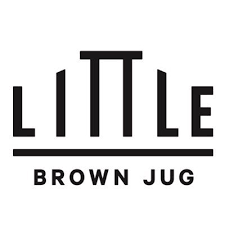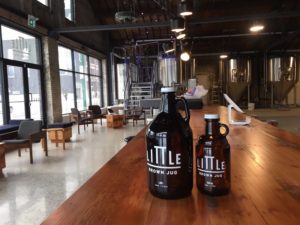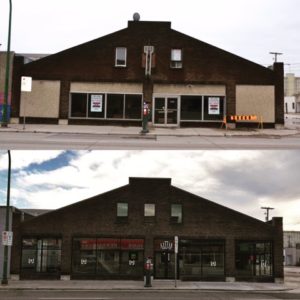 Take one smart, motivated economist desiring to return to his hometown, mix in one derelict heritage building in downtown Winnipeg and then add beer. Viola! A recipe for Little Brown Jug Brewing.
Take one smart, motivated economist desiring to return to his hometown, mix in one derelict heritage building in downtown Winnipeg and then add beer. Viola! A recipe for Little Brown Jug Brewing.
Little Brown Jug just officially opened their doors last week. Their launch marks the arrival of a very interesting and original beer project for Winnipeg.
Kevin Selch was a Winnipeg kid working as an economist for the federal government in Ottawa. While out there he began to experience craft beer. “My interest in craft beer is originally from a drinker perspective. I came to beer through the Ontario and Vermont beer scenes.”
He was looking for a reason to return to Winnipeg. He saw an opening for a new brewery in the booming prairie city. “I had an idea and its started to grow. I wrote a business plan, talked to brewers and did my research.”
Selch considers himself an “urbanist” and he takes seriously the idea of revitalizing downtown cores. “I found a century old building that was originally the Red River Motor Coach Company – an old livery.” The building was located in the city’s Exchange District, once a financial hub that fell on harder times but has recently begun revitalizing. “It has these great historic buildings. It has had issues in the past but great stuff is happening today. It is the heart of the city now,” Selch proclaims.
He was hooked. He worked with the landlord to reclaim the space. “We demolished the entire inside and exposed douglas fir timbers spanning front to back as well as triangular steel trusses that hold up roof.” The potential beauty of the space inspired Selch. Over the last few months they have worked to transform the space. They have installed a wall of windows at the front to let in light and have created “an open concept. The tap room is in the front, the brewery in the back. There is no glass, no wall. Nothing dividing you from the brewing process.”
The goal of the tap room is give people a full brewery experience. “You will get the brewing experience when you are there, it won’t feel like a pub. Sometimes it will be hot, sometimes humid, machines will be going.” But that is what he likes about the space. It will offer some basic food such as cheese and charcuterie plates, but nothing full service. “It is a passive space that we want to be part of the community.”
The design fits the Selch’s vision for the brewery. “we have three values: honesty, community, quality,” he observes. Of particular importance to Selch is “transparency in manufacturing. We want consumers to see how product is being made. It is an open space. Standards have to be high because everyone can see what you are doing.”
Selch knows he is not a brewer, so he partnered with Bernie Wieland. Wieland is an experienced professional brewer educated at both Siebel and UC-Davis and who has worked for a variety of breweries in Germany and Canada, including Half Pints, Vancouver Island and Lake of the Woods.
For now they plan to brew a single beer, at least “just for openers”. Partly it is about allowing for time to build consistency and controlling the supply chain. But also it is about creating a single, unique beer. And their choice is definitely that.
And an unusual one at that. Their flagship is a Belgian Pale Ale (BPA) called 1919 Belgian Pale Ale. “It is an accessible beer but few people make a commercial BPA,” Selch notes. “I like this beer and want to produce it.” Selch fell in love with a Belgian Blonde he tried in Vermont and decided something like that could work. “I had that beer in my fridge and on a hot day I would be walking home and thinking about having that beer. That was my only goal with our first beer – a beer that would make you feel that way.”
The beer’s name – 1919 – has kind of a double homage for Winnipeg. 1919, of course, was the year of the Winnipeg General Strike, to this day considered a crucial moment in Canada’s labour history. The other significance, interestingly, is that the heirloom hop variety Brewers Gold was made in 1919 as an intentional hybrid of a wild Manitoba hop with known British male hop (bet you didn’t know that!). Brewers Gold is the parent of many modern varieties, including Sterling, Centennial and Nugget. Little Brown Jug’s inaugural beer is made with Brewers Gold.
Little Brown Jug has installed a 20-HL brewhouse with 40-HL fermenters. The unique aspect of their brewing process is the decision to adopt the traditional German krausening process for conditioning the beer. The process involves adding a portion of actively fermenting wort to a conditioned beer to spark the carbonation process. It is time consuming and notoriously finicky, but is unquestioningly traditional.
 The other original aspect of their model is their packaging. They will do the usual kegs, growlers and pints at the tap room. But they are adding in what Selch describes as the “pick-a-pop model”. For those of a certain age who grew up in Western Canada you will remember Pick-A-Pop (or its competitor Happy Pop). It was a warehouse where you selected your own selection of pops packaged in proprietary bottles. On your next trip, you brought back the empties and picked up a new case. The company dealt with washing and filling the returns.
The other original aspect of their model is their packaging. They will do the usual kegs, growlers and pints at the tap room. But they are adding in what Selch describes as the “pick-a-pop model”. For those of a certain age who grew up in Western Canada you will remember Pick-A-Pop (or its competitor Happy Pop). It was a warehouse where you selected your own selection of pops packaged in proprietary bottles. On your next trip, you brought back the empties and picked up a new case. The company dealt with washing and filling the returns.
Selch sees that as an important element. While he understands the value of growler fills, he knows that often customers “want to pick up some beer after work, but they forgot their growler.” In the traditional model they would have to buy a new growler or go without. Their model is to allow them to just pick up beer and drop off bottles as they are able. “You don’t have to clean your bottles or remember your growler. You can just pick up new ones.” They will handle the cleaning and sanitizing and plan on offering a reasonable $2 deposit on the bottles to encourage flexibility.
Plus the bottles will be 750 ml, which encourages picking up a few (especially once they have more than one beer) and doesn’t create a barrier for those who drink less.
As for the name, “I wanted a name that captures craft beer culture.” He feels it reflects the growing growler culture of craft beer. It also has (appropriately) an historical connection. “It is a Civil War era drinking song.” To that end, Selch feels the name has a “muscial, sing-song feel to it,” which also caught his imagination.
In 5 years Selch hopes the space will be “full of fermenters” and “maybe sending beer to Edmonton,” he jokes. But for now they want to dial in their single beer and get Winnipeggers excited about coming to an historical space with a renewed purpose.



Leave a Reply